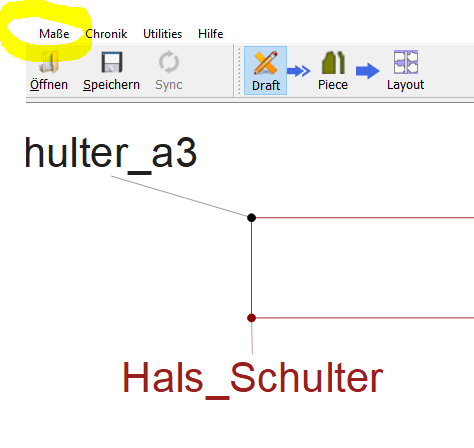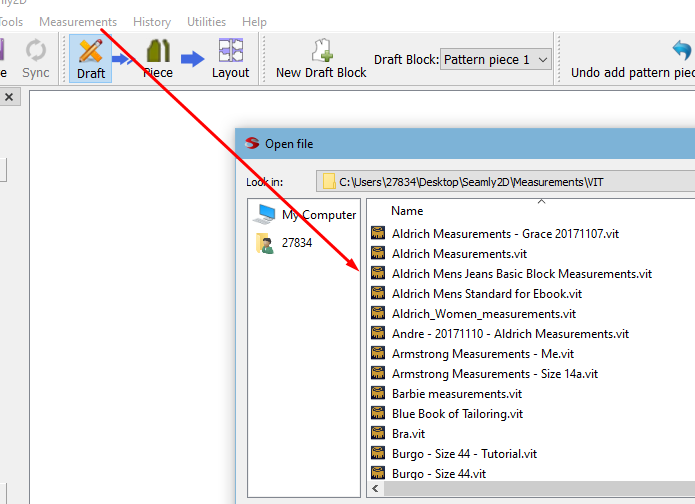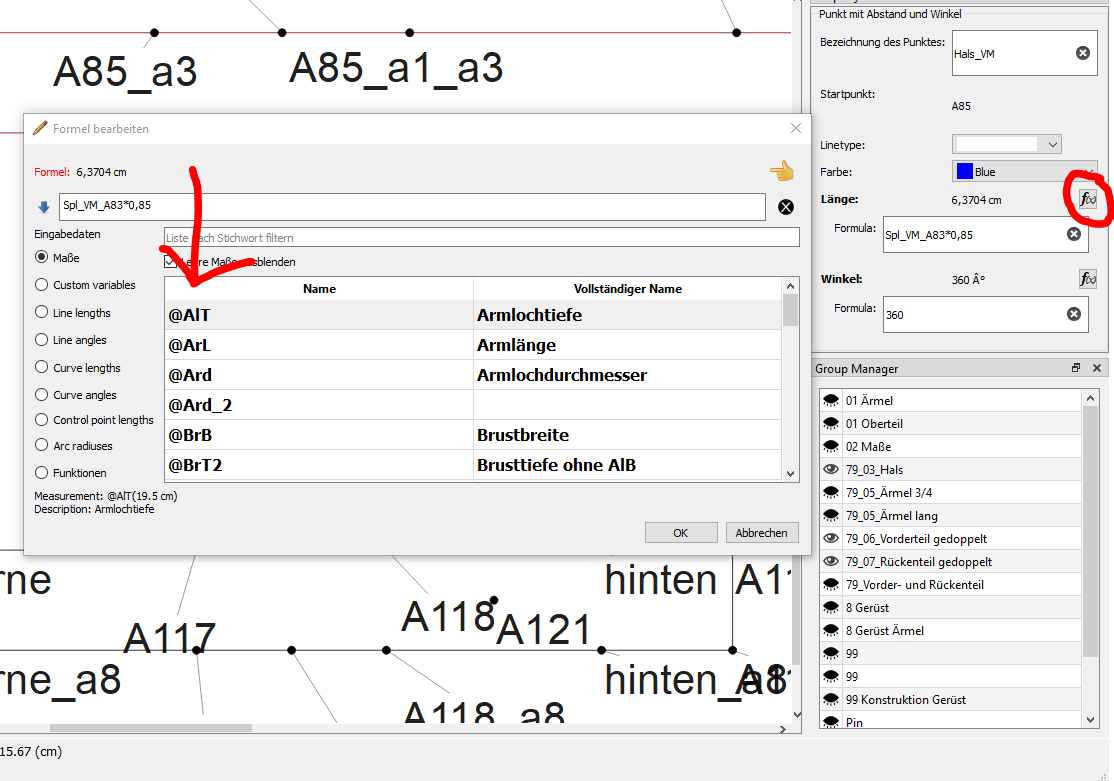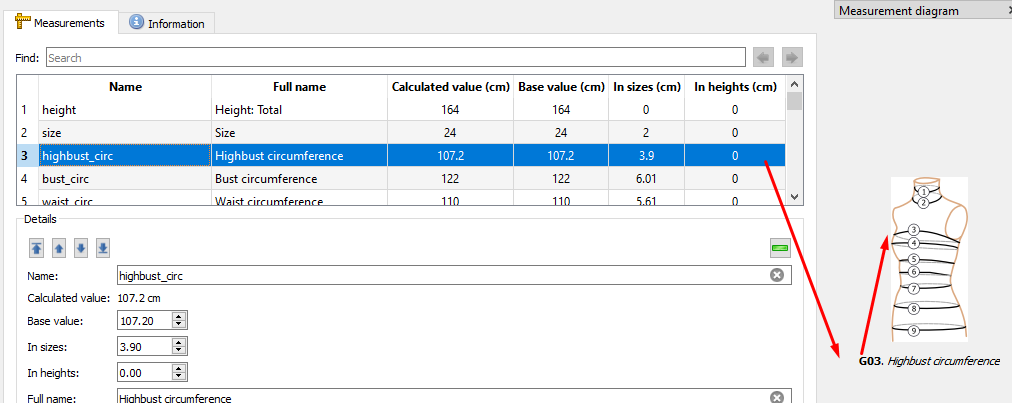I just found this software, but i cant find any manual how to use the program. I wonder, if i can put in my own measurements and its automatically creates a basic pattern? Or is there a basic sample to use and adjust? In SeamlyMe i found where I could add my measurements, but I dont know how to transfer that to Seamly2D? I found under another post, about Seamly cloud, to get blocks, but I dont understand how I get the blocks and add them to the program?
Willkommen sabbie:)

Oben unter “Maße” - Load individueal oder -Load Multizsize kannst du deine in SeamlyMe angelegten Maße laden. Wenn du dann mit deinen Tools arbeitest kannst du die Maße abrufen.
Ich hoffe das hilft dir weiter und viel Spaß beim Arbeiten.
In addition to what @Scholli said, here is a link to some files produced by @Grace: Download Basic Block Patterns - #10 by Grace
We hope that eventually Seamly will come bundled with a couple starter patterns, but its ‘thing’ is to allow one to draft patterns themselves in what way they prefer without having to completely re-draft the pattern each time a new measurement set is being used, so bundled patterns are a very low priority. I believe some patterns are buried in the source-code folders though.
I’m sure there’s more to say, but I’m out of time. Please mention whatever else you would like help with!
![]()
Welcome here, sabbie ![]()
I see Seamly2D as my set of rulers and pencils and a convenient way to store patterns. I want to learn how to construct patterns, so I am not of much help for blocks, I guess.
A manual you can find in the wiki together with some other useful information.
cu Monika
Hello and welcome @sabbie.
When you have started a New pattern file in Seamly2D, you can add the measurements by going Menu > Measurements > Load Individual and then choose the measurement file you wish to add. This process is the same, at any time, if you wish to change the measurement file to a diferent one, but all the same measurement codes must be in the different file, as well.

Which of course would include any “custom” measurements you create.
Such as the one I commonly use… chestscale = breast_circ / 2 which saves dividing every breast_circ occurance by 2 in the formulas.
I usually put this type of measurement into the Variables inside the pattern itself because I can’t use formulas in multisize patterns, so this way, it’s available for both types of measurement files. But yes, any “custom” measurements, as well.
Hi! Thank you for your reply. Ill look into that!
hello! Thank you, I will have a look in the link you sent me. I think i understand what you mean. I have yet not figured out how to use the program yet, I would love to create my own basic pattern there with my own measurments.
Thank you, I will read wiki you linked to me. At the moment i have yet only drafted patterns on paper mainly but also a few in adobe illustrator. I do however struggle a bit to draft my own basic top pattern, i wish to construct different sizes. I have to take some time to learn this program and see if i manage there. I have made two different ones in illustrator, i was hoping, once i learn this program, it will be easier and faster to create them here instead
Thank you, i found that and put in measurements of my own and saved it. It was a bit confusing to me, as there is so many different measurments, some i never heared of, so i had to figure out which ones i needed and had, some seamed similar to one and another? I have not had more time to look more into this, but i will once i can. Once i have my measurements, i just have to find out how to start. I wish to draft my basic top pattern
Well done, @sabbie. If you click on a code in the list, it will give you an image of the area that needs to be measured. You may need to toggle the icon to show them:

The name will be at the bottom of the diagram:
I like to put my codes & description onto an Excel sheet before I create my measurement file so that I can sort them into order of code or description and I can add the measurements of the person that I’m measuring on the same sheet. (Mostly, I use the same codes for all my patterns.) It makes life a little easier in this boring but very important part of pattern making 
And yes, some are similar to each other, but some are measured close to the skin & others are the distance between those points without taking into account the curves of the body, just a direct measurement.
If you would rather not work with Known codes, you may always create unique ones by creating Unknown codes of your own choosing - these have an @ as prefix.
It can be a bit daunting at first, but once you grasp a few basic concepts of how the apps work together, you’ll get there. ![]()

